Honor Award
Landscape Infrastructure: Case Studies by SWA
SWA Group, Los Angeles
Publisher: Birkhauser
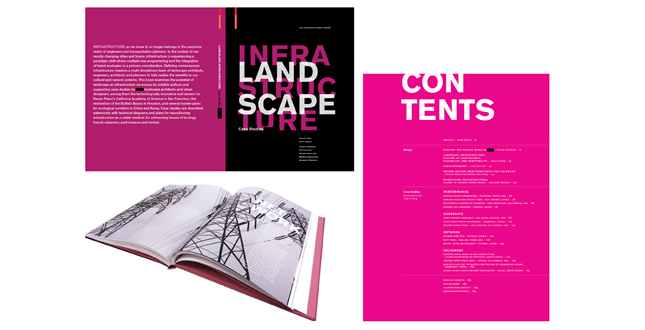 Close Me!
Close Me!Landscape Infrastructure: essays + case studies is a pivot point for engaging and redefining infrastructure in the context of future growth in our cities and towns.
Download Hi-Res ImageImage: SWA Group
Image 1 of 15
 Close Me!
Close Me!Essay. This book is framed by critical essays exploring landscape infrastructure and its application, interpretation, and theoretical framework in practice and academia.
Download Hi-Res ImageImage: SWA Group
Image 2 of 15
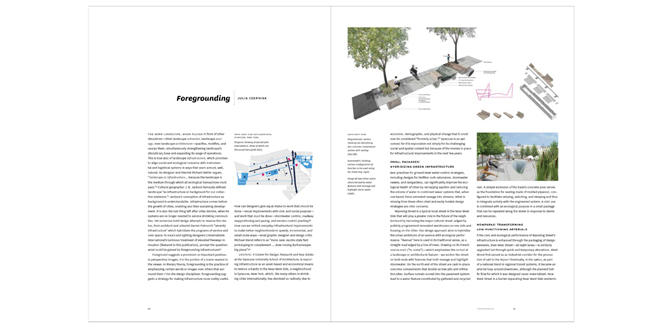
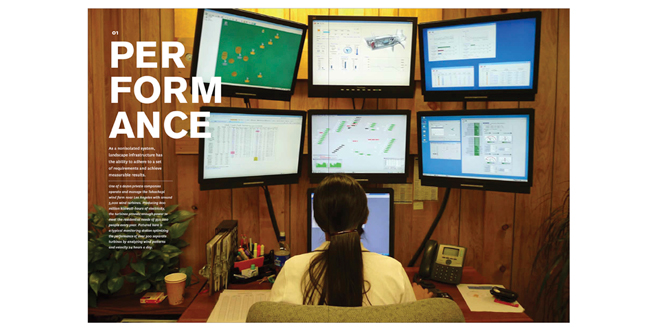 Close Me!
Close Me!Chapter Divider. Case studies are divided into four categories as defined in Hung’s essay on landscape infrastructure. For the Performance chapter divider (above), a photo of a monitoring station represents the importance of metrics and performance in the landscape.
Download Hi-Res ImageImage: SWA Group
Image 4 of 15
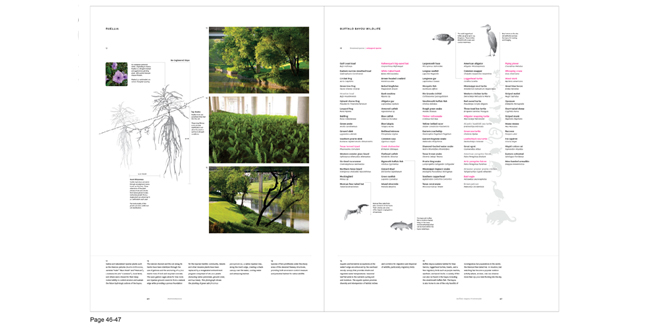 Close Me!
Close Me!Case Study. Buffalo Bayou Promenade, Houston, Texas. This example breaks down the ecologically engineered aspects of the project to its essential components.
Download Hi-Res ImageImage: SWA Group
Image 5 of 15
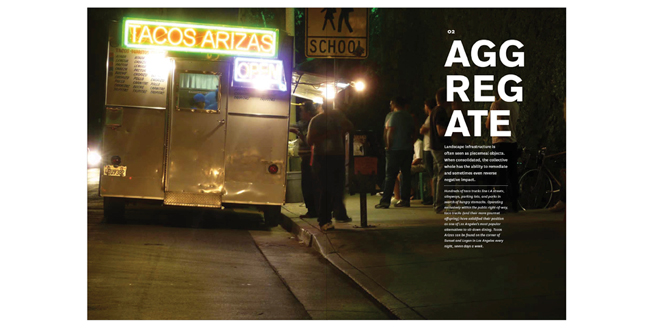 Close Me!
Close Me!Chapter Divider. For the Aggregate chapter (above) we chose the ubiquitous L.A. food truck to reinforce how the collective ‘pieces’ make up the ‘whole’.
Download Hi-Res ImageImage: SWA Group
Image 6 of 15
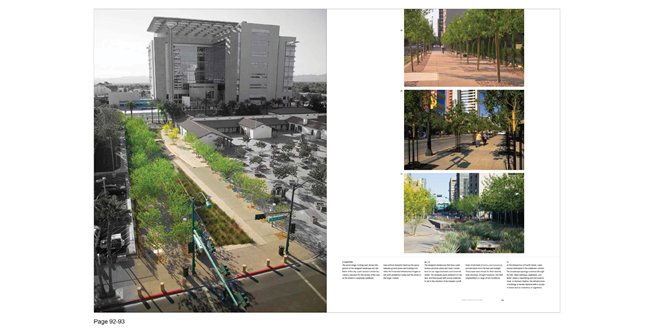 Close Me!
Close Me!Case Study. Lewis Avenue Corridor, Las Vegas, Nevada. This example shows how a small linear urban park can address open space needs while integrating adjacent streetscape systems.
Download Hi-Res ImageImage: SWA Group
Image 7 of 15
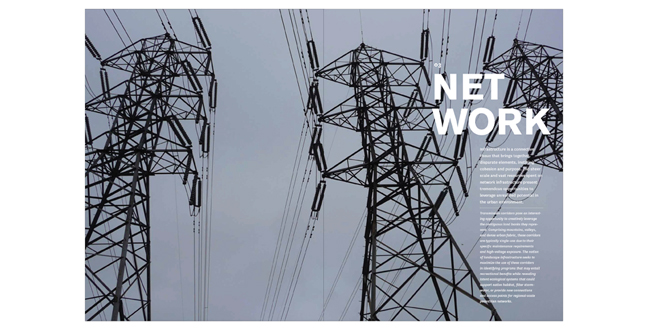 Close Me!
Close Me!Chapter Divider. For the Network chapter (above) we chose a photo of overhead transmission lines to represent the finer aspects of continuity and scale.
Download Hi-Res ImageImage: SWA Group
Image 8 of 15
 Close Me!
Close Me!Case Study. Katy Trail, Dallas, TX. This example illustrates how a simple trail can connect more than 300,000 residents to 125 acres of urban park land.
Download Hi-Res ImageImage: SWA Group
Image 9 of 15
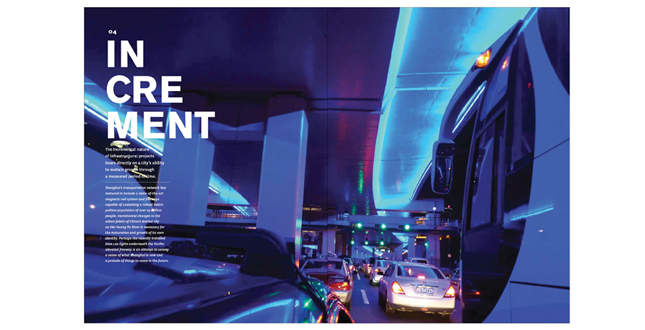 Close Me!
Close Me!Chapter Divider. For the Increment chapter (above) we selected this provocative image to highlight new trends and attitudes towards infrastructural systems.
Download Hi-Res ImageImage: SWA Group
Image 10 of 15
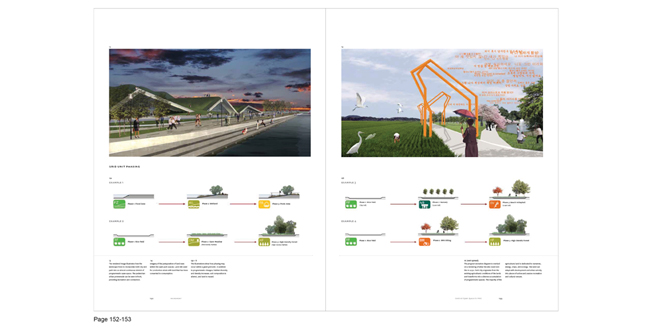 Close Me!
Close Me!Case Study. Central Open Space in MAC, Park City, Yeongi, Korea. This example illustrates how organizational systems can creatively address the growth and the implementation of a public park over time.
Download Hi-Res ImageImage: SWA Group
Image 11 of 15
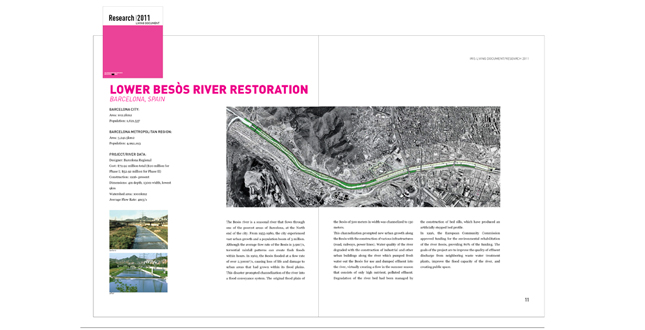 Close Me!
Close Me!The Infrastructure Research Initiative (I.R.I.S). IRIS was created as a dynamic platform for ongoing research and analysis of projects throughout the world.
Download Hi-Res ImageImage: SWA Group
Image 12 of 15
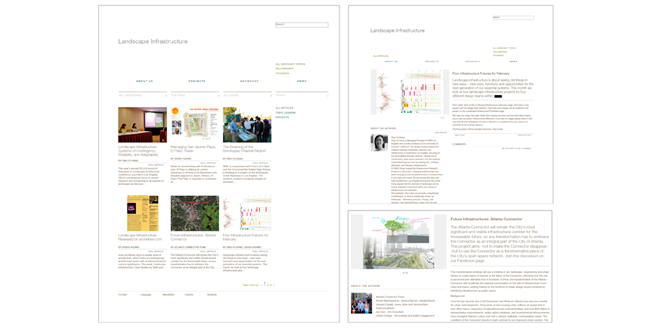 Close Me!
Close Me!Landscape Infrastructure Advocacy Blog. We created a blog site to incite discussion on current research, trends, lecture panels, and academic studios addressing the topic of landscape infrastructure.
Download Hi-Res ImageImage: SWA Group
Image 13 of 15
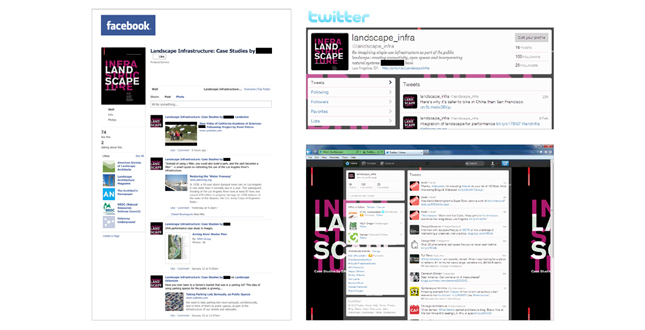 Close Me!
Close Me!Social Media. The Landscape Infrastructure Facebook and Twitter pages are alternative venues that connect us to hundreds of organizations and designers.
Download Hi-Res ImageImage: SWA Group
Image 14 of 15
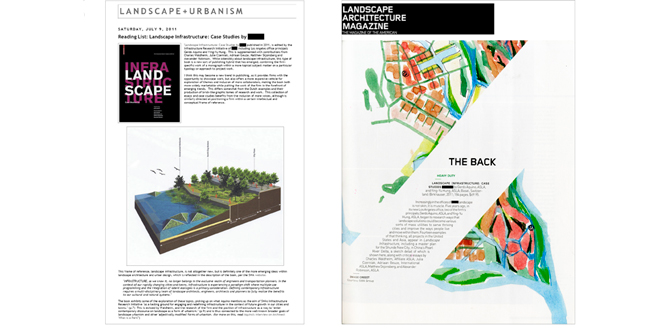 Close Me!
Close Me!Internet and Print. Landscape Infrastructure: essays + case studies has been reviewed by numerous bloggers and writers on the internet and in print. This press broadens our reach and helps to garner interest in the subject.
Download Hi-Res ImageImage: SWA Group
Image 15 of 15
Project Statement
Landscape Infrastructure: essays + case studies, aims to postulate the future of infrastructure as being directly linked to a multi-functional approach that integrates alternative modes of transit, enhances public accessibility, is ecologically performative and economically sound. Critical essays by renown authors and 14 case study projects, positions this publication as a valuable resource for students, practitioners and municipal planning officials seeking to redefine the potentialities of infrastructure in our rapidly changing cities and towns.
Project Narrative
—2012 Professional Awards Jury
“While ostensibly about landscape infrastructure, this type of book is a new sort of publishing hybrid that has emerged, combining the firm-specific work within a more topical subject matter on a particular typology or approach to project work. If this new type of book is the trend, it’s a welcome one… The book is richly detailed and provides interesting exploration of topics. The 14 case studies of projects - organized per Hung’s four areas of performance, aggregate, network, and increment - are introduced with a concise description and many graphics, exploring the process as well as the product - showcasing innovation beyond merely showing off a project.”
—Jason King, Book review of Landscape Infrastructure: essays + case studies, Landscape + Urbanism Blogspot
Landscape Infrastructure: essays + case studies drew substantial inspiration from a symposium held at the University of Toronto in 2008, called “Landscape Infrastructures – Emerging Practices, Paradigms and Technologies Reshaping the Contemporary Urban Landscape,” in which academics, writers, and practitioners shared their views on this topic and its potential to heighten the polemics of landscape. The symposium posited that landscape infrastructure repositions landscape as a complex, instrumental system of essential services, resources, and processes that underpins contemporary urban economies and acts as a kind of performative hybrid infrastructure that is as much about culture as it is about engineering. The symposium participants overwhelmingly argued that a fresh point of view is needed to plan and manage cities with outdated infrastructure and that a focus on infrastructure is the key to a more vibrant and functional 21st-century city.
The Topic
The primary goal of this publication is to continue this dialogue by engaging and redefining infrastructure through critical essays on the topic of landscape infrastructure and case study projects. We have then taken the conversation beyond the pages of this book via social media, lectures, blogs, universities, and within the designer’s office. Through these multiple platforms we seek to position the future of infrastructure as an integrated alternative for improving mass transit, enhancing public accessibility and ecological performance, while remaining economically sound. Further objectives of the book and other media outlets are to merge relevant topics in hydrology, natural systems, density, transit, pollution, and public health with infrastructure and program. At the beginning of the book, a series of essays explore landscape infrastructure’s potential as a means of furthering this discussion. Fourteen case study projects are offered, not as a definitive collection, but rather as a broad outline positing a set of principles and strategies with which to explore the potential of this topic. As an integral part of our daily regimen, infrastructure must be reimagined for the advancement of our culture, ourselves, nature, and the lifestyles we hope to sustain now and in the future.
As the world faces an urgent need for new and repaired infrastructure systems, design and planning professionals have the crucial opportunity to reimagine networks that support multiple uses and functions. For example, America’s infrastructure is decaying at an astonishing rate. The U.S. Interstate system alone is over 80 years old and crumbling under the stress of increased usage. As traditional single-use systems, these highways and their counterparts — aqueducts and railways — have slowly run their course and have become obsolete in their ability to sustain their initial carrying capacities as well as the structural systems that support them. This raises the question; can landscape play a more structured role in the development of new infrastructure? Can landscape itself be considered an infrastructure in the sense that it could also act as a kind of conveyance or distribution network?
The Publication
Landscape Infrastructure aims to address these questions and to inspire designers, academics, engineers and others, to imagine the future of infrastructure as being directly linked to a multi-functional approach, which integrates infrastructural systems within the landscape framework in a way that is more aligned with natural systems of ecology. Further, the objectives of the book seek to triangulate relevant topics in hydrology, natural systems, density, transit, pollution and obesity with infrastructure and landscape programs. This is addressed through active and passive recreation, running, walking, biking, dining and tourism. In order to successfully redefine contemporary infrastructure, we must collaborate and work as multi-disciplinary teams of landscape architects, engineers, architects and planners to fully realize the benefits to our cultural and natural systems. Our cities need this kind of infrastructural approach that extends beyond perceived boundaries and connects various sites to other sites, people to places, communities to communities, people to people, nature to city, and city to nature.
This publication attempts to convey this particular point of view as a kind of landscape infrastructure that posits an invigorating new chapter in the development of our cities, towns, villages and neighborhoods in the U.S. and abroad. The essays are followed by 14 in-depth case study projects, which are broken down into 4 categories that help to further define the topic of landscape infrastructure. These topics are as follows:
- Performance — Metrics. Allowing for measurable results that can be analyzed and adjusted to achieve maximum results.
- Aggregate — The collective whole. When disparate pieces are consolidated, the whole may have the potential to remediate and reverse negative impacts.
- Network — Connectivity. A connected infrastructure system can instill cohesion and purpose into the urban fabric.
- Increment — Phasing/Growth. Flexibility for changes and adaptation that will support a sustained growth over a measured period of time.
By organizing the projects in this manner, the reader can begin to understand the breadth of this topic and further refine the definition of landscape infrastructure as it relates to real projects. For example, Katy Trail, which appears in the Network category, transforms an abandoned rail corridor into a hugely popular pedestrian-bicycle corridor linking over 20 neighborhoods in central Dallas. With a strong design vision unifying its entire 3.5-mile length of previously obsolete infrastructure, this urban park has catalyzed an upsurge in local property values, created connective pedestrian paths and established new venues for civic life at distinctive plazas, outlooks, and access points. These case studies are offered, not as a definitive collection, but rather, as a broad cursory outline positing a set of principles, dictums and strategies in which to explore the potentialities of this topic and the various contexts that can nurture further investigation, research and analysis. Additional case studies have been explored further by a research initiative within the firm, an Advocacy blog which focuses on the subject, as well as Facebook and Twitter pages that contribute to the ongoing dialogue on a daily basis. Through these various outlets we have had the opportunity to reach a diverse audience of students, landscape architects, architects, engineers, academics, and writers. Interest and participation from various disciplines contributes to the depth of our research, which we can then share with the greater public on the Advocacy blog.
Digital Media
To date, more than 1,000 copies of the book have been sold and a reprint/second edition is underway. As the book garners a larger and more diverse audience, participation and traffic on our blog, Facebook page, and Twitter has increased as our reach widens. Through these social media outlets we are able to showcase additional case study projects from around the world, share interesting articles, reviews and white papers on the subject, and participate in a daily dialogue. The authors are also taking the topic “on the road” to various universities and organizations to lecture and participate in panels and studios that explore the topic of Landscape Infrastructure. Although Landscape Infrastructure is not a new topic, this publication has served as a springboard for a larger conversation on the subject within the design, engineering, and academic community.
Project Resources
Authors
Ying-Yu Hung, ASLA; Gerdo Aquino, ASLA; Charles Waldheim, Affiliate ASLA; Julia Czerniak; Adriaan Geuze, International ASLA; Matthew Skjonsberg; and Alexander Robinson, ASLA
Publisher
Birkhäuser Architecture (2010)
Editorial Supervision
Ria Stein
Copy-Editor
Melissa Vaughn
Graphic Design Concept and Layout
Yee Design and Liz Lagedrost
Project Coordination
Natalie Sandoval
Special Thanks to
The Research Initiative at SWA (IRIS); Kinder Baumgardner, ASLA; David Berkson, ASLA; David Bickel, ASLA; Rene Bihan, ASLA; William Callaway, FASLA; Young Joon Choi; Scott Chuang; Scott Cooper; John Cutler, FASLA; Zachary Davis; Marco Esposito, FASLA; Thomas Fox; Gary Garcia; Cinda Gilliland; Lori Hjort; Roy Imamura, ASLA; Robert Jacob; Youngmin Kim; Richard Law; Hui-Li Lee; James Lee; Margaret Leonard; John Loomis; Ye Luo; Chuck McDaniel; Ross Nadeau; Sean O’Malley; Na Ra Park; Timothy Peterson; Kalvin Platt; Lawrence Reed; Joe Runco; Kevin Shanley; Elizabeth Shreeve; Scott Slaney; Todd Strawn; Ria Stein; David Thompson; Amanda Walter; John L. Wong; and Ji Hyun Yoo






